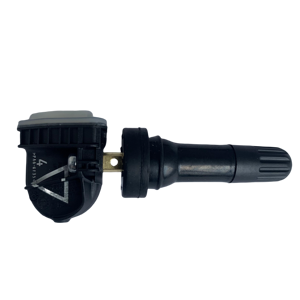(2752 products available)
























































































































































































































Monitors tire pressure to enhance driving safety and effectiveness. A well-working sensor keeps track of changes in tire pressure, providing information to the driver and assisting in maintaining proper tire inflation. Nevertheless, the sensor itself needs to be in good shape; else, it won't be able to do its function. The Ford Tire Pressure Monitoring System (TPMS) sensor comes in a variety of configurations. The following are some typical types:
TPMS sensor ford comes in different specifications based on the make and model of the vehicle. Some common specifications are voltage, frequency, battery life, and sensor type.
Voltage:
Most TPMS sensors operate on low voltage. They require 1.5 to 3 volts. A higher power source may damage the sensor. When installing the sensor, use the voltage recommended by the manufacturer.
Frequency:
TPMS sensors broadcast data to the onboard computer at a specific frequency. The frequency is measured in MHz. It is important that the frequency of the sensor being used matches the frequency required by the vehicle's computer. Mismatched frequencies can cause communication errors and potentially affect vehicle safety systems.
Battery life:
Most TPMS sensors come with batteries that have a lifespan of 5 to 10 years. After this period, the battery will need to be replaced, or a new sensor will need to be installed. Some sensors have batteries that are rechargeable. However, they do not last as long as non-rechargeable batteries.
Sensor type:
There are two main types of TPMS sensors: direct and indirect sensors. Direct sensors use a pressure sensor to measure the air pressure in the tires. They also use a battery and an electronic circuit. The indirect sensor uses the anti-lock brake system (ABS) to monitor the speed of the tires. It does not require a battery.
When the sensor type is known, it is easier to maintain the TPMS system. Here are some maintenance tips:
It is important to address any issues as soon as they are noticed. Neglecting to maintain the TPMS sensor can lead to decreased sensor performance and potentially result in tire-related issues. In conclusion, maintaining the TPMS sensor is important for sensor longevity and vehicle safety.
Choosing proper tools for sensor TPMS service is critical for making money and keeping clients happy. Sensors that last longer and operate better reduce comebacks and raise profits.
Vehicle compatibility
Check the vehicle's make, model, and year to see if it is compatible with the sensor. Not all vehicles work with every sensor. Use the Internet or the vehicle's owner's manual to find the correct information.
Wired or wireless connection
Decide if the sensor should connect with wires or wirelessly to the vehicle's computer. Some vehicles only work with one type of connection.
Battery life and replaceability
Consider how long the sensor's battery will last before needing a new one. Look for sensors with batteries that last a long time - several years if possible. Also, think about how easy it will be to replace the battery when it runs out.
Sensor construction and material
TPMS sensors are made of different materials. Some are more durable and waterproof than others. Stronger sensors may last longer in harsh conditions. But they could weigh more or take up more space than less robust ones. Choose materials based on what is most important for this vehicle.
Brand reputation and reviews
Research which brands of TPMS sensors get good reviews from other mechanics and car owners. A brand with a solid reputation will likely provide quality parts that work well. But thoroughly investigate any company or product before using it.
Price and warranty
Set a budget for how much to spend on the TPMS sensor. Sometimes, you get what you pay for, so be careful with very cheap options. See if the manufacturer offers a warranty in case something goes wrong with the sensor.
There are several ways to replace a TPMS sensor, but the easiest way is to do it yourself. A DIY replacement is quite straightforward. First, ensure to have the right tools and materials. Below are the tools required for this operation:
Once the right tools have been acquired, replacing the sensor is easy. Follow the steps below:
Always refer to the vehicle's owner's manual or the TPMS sensor's installation guide for specific instructions and torque specifications. Additionally, some vehicles may require a TPMS tool or programmer to be used to activate the new sensor and ensure it's communicating with the vehicle's TPMS. These tools can often be rented or purchased at an auto parts store or online.
Q1: How long do the batteries last in a TPMS sensor?
A1: Generally, the batteries in TPMS sensors last between 5 and 7 years. After this time, it is recommended to replace the sensors.
Q2: Can a TPMS sensor be replaced without a dealership?
A2: Yes, it is possible to replace a TPMS sensor without going to a dealership. Many auto repair shops can replace and reprogram TPMS sensors.
Q3: What should be done if the TPMS warning light remains on even after checking the tire pressure?
A3: If the TPMS warning light remains on, there may be a problem with one of the sensors. It is recommended to check the sensors to see if they are working correctly.
Q4: Is it necessary to reprogram TPMS sensors when changing tires?
A4: In most cases, it is not necessary to reprogram TPMS sensors when changing tires. However, if the sensors are replaced or if there are compatibility problems, reprogramming may be required.
Q5: Can larger tires affect the performance of the TPMS?
A5: Yes, using larger tires can affect the performance of the TPMS. The new tire size may not be compatible with the TPMS, causing incorrect readings or problems with the sensors.